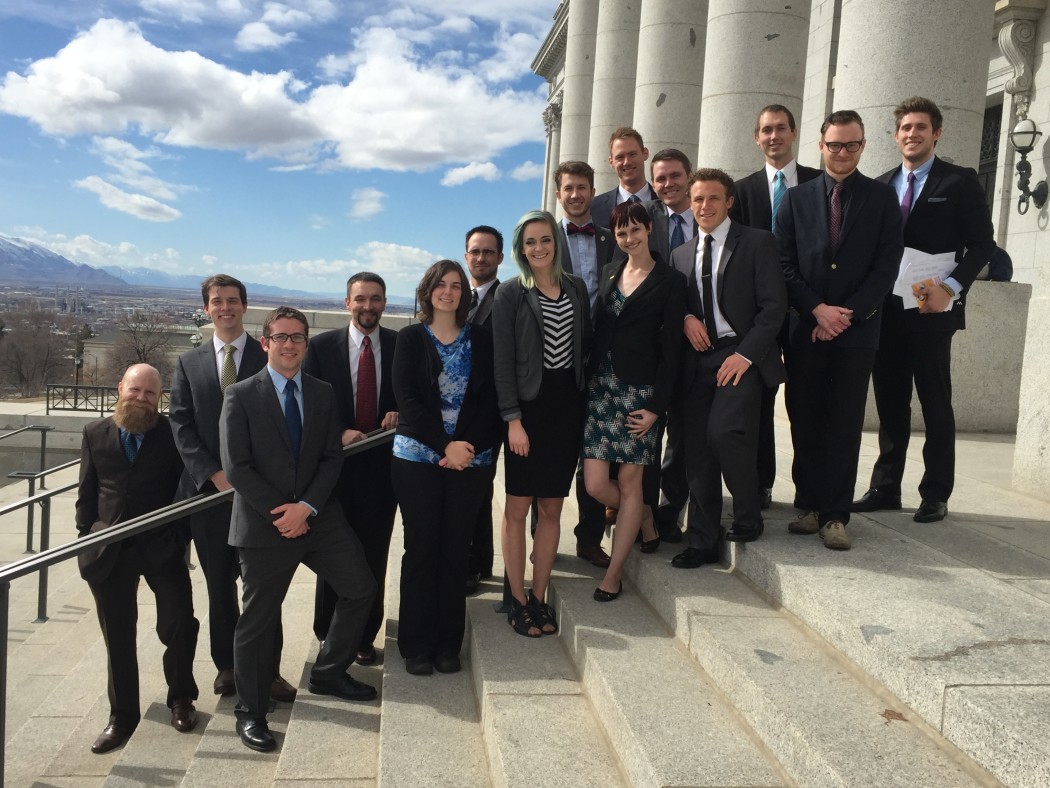Utah students set aside rivalries to promote clean energy
As the Utah State Legislature entered this week’s session, students from Utah State University, the University of Utah and BYU met to promote nuclear energy and research funding.
The students met on Capitol Hill and are members of the American Nuclear Society (ANS), as well as a few from the Society of Environmental Engineering Students (SEES). Their main objective was to educate legislators on the basic science of nuclear energy, in addition to clarifying the benefits of nuclear energy legislation and research funding.
They met in small groups with dozens of senators and representatives (or interns, when legislators were unavailable). After hours of lobbying, rescheduling, meeting and even more rescheduling, our engineers began to realize that the legislators weren’t the only ones learning something new.
“As engineers, most of us are thinkers and doers and just know the physical side of things, but we are not the talkers. It was cool that we got to experience that… It’s not just a straight shot to get something like this to proceed. There’s a lot of different things you have to go through to get there,” said Zac Lalliss, a Utah State mechanical engineering student.
Despite being outside of their typical niche, the experience was far from arduous or intimidating — by the end, at least.
Hank Costner, also a mechanical engineering student at Utah State, said, “I was really apprehensive at first, but then the way you can talk to them [the legislatures] and the way they talk to you, they’re very approachable.”
James Broderick, majoring in civil engineering, agreed with Costner.
“It was a good experience talking to the senators, they’re all very good guys, and some of them very knowledgeable,” he said.
As members of the ANS, students’ main objective is to increase awareness of nuclear energy, in addition to the sentiments that accompany the awareness. To them, nuclear energy is seen as the only viable energy source that can meet the base load requirement in a clean and long-term manner.
This claim is supported by abounding evidence. The energy stored in five small uranium pellets has the potential to power a house for an entire year; many of these replica pellets were handed out to legislators throughout the day. Kurt Harris, a mechanical engineering PhD candidate, reminded numerous politicians throughout the day that nuclear energy is statistically the safest energy supply the world has.
Despite some hesitation, the talks and evidence were largely well-received, many of the students believed.
“I was pleased with the mark we left. I think they were able to see that there is a non-trivial concentration of students interested in the potential for new nuclear infrastructure in Utah,” said Levi Gardner, a master’s mechanical engineering student at Utah State.
However, in addition to supporting awareness and more favorable sentiments, ANS student members also hope to one day see nuclear jobs in Utah. With no large nuclear reactors or research opportunities in Utah, virtually all students studying nuclear science and engineering will be forced to relocate following graduation.
But hope is on the horizon. This was the ANS’ first year lobbying at the Utah State Capitol and was meant to simply spread awareness and asses the generalized views on nuclear energy. In future years, the students hope to be back with legislation that will facilitate a shift toward nuclear energy. This shift, inevitably, will include jobs.
The exciting part is “the potential there is for job growth and increased revenue in the state as a result,” Gardner said. Unsurprisingly, this enthusiasm and potential was shared by many of the legislatures whom they met with.
For the sake of employment and a better future, ANS student members hope that this enthusiasm will carry forward into future policy. When it does, Gardner said, “we will be better positioned to advocate — and educate, more specifically — legislators on the issues.”
— jack_brimhall@yahoo.com
@jack_brimhall96

